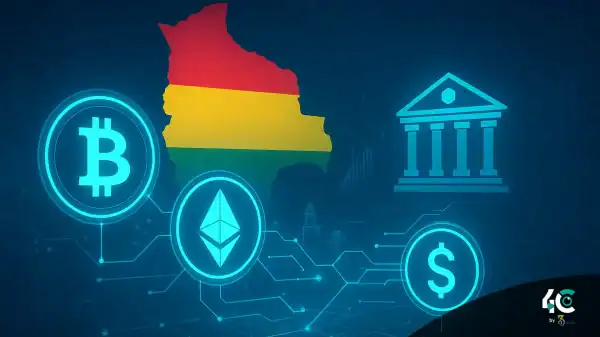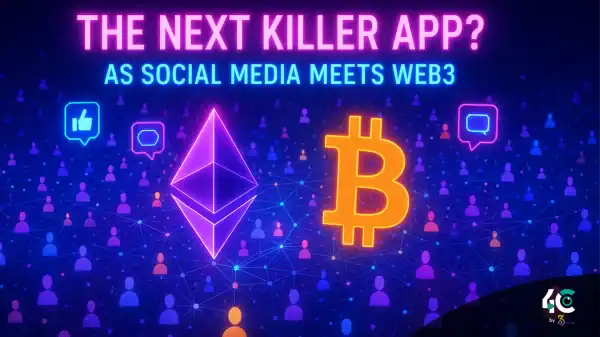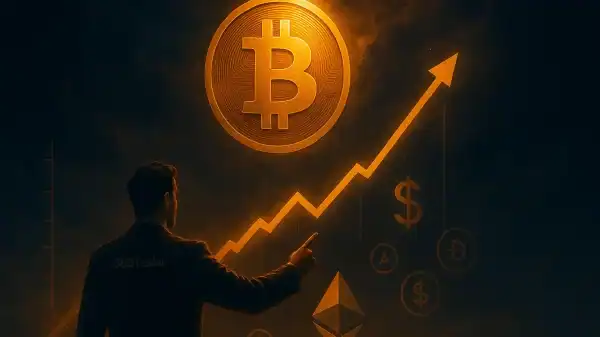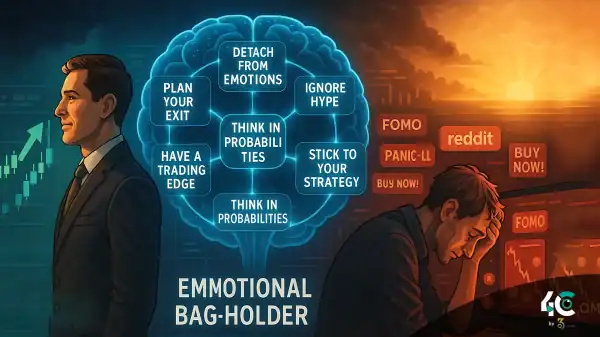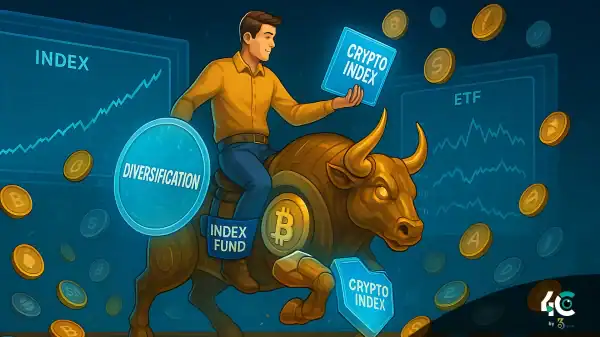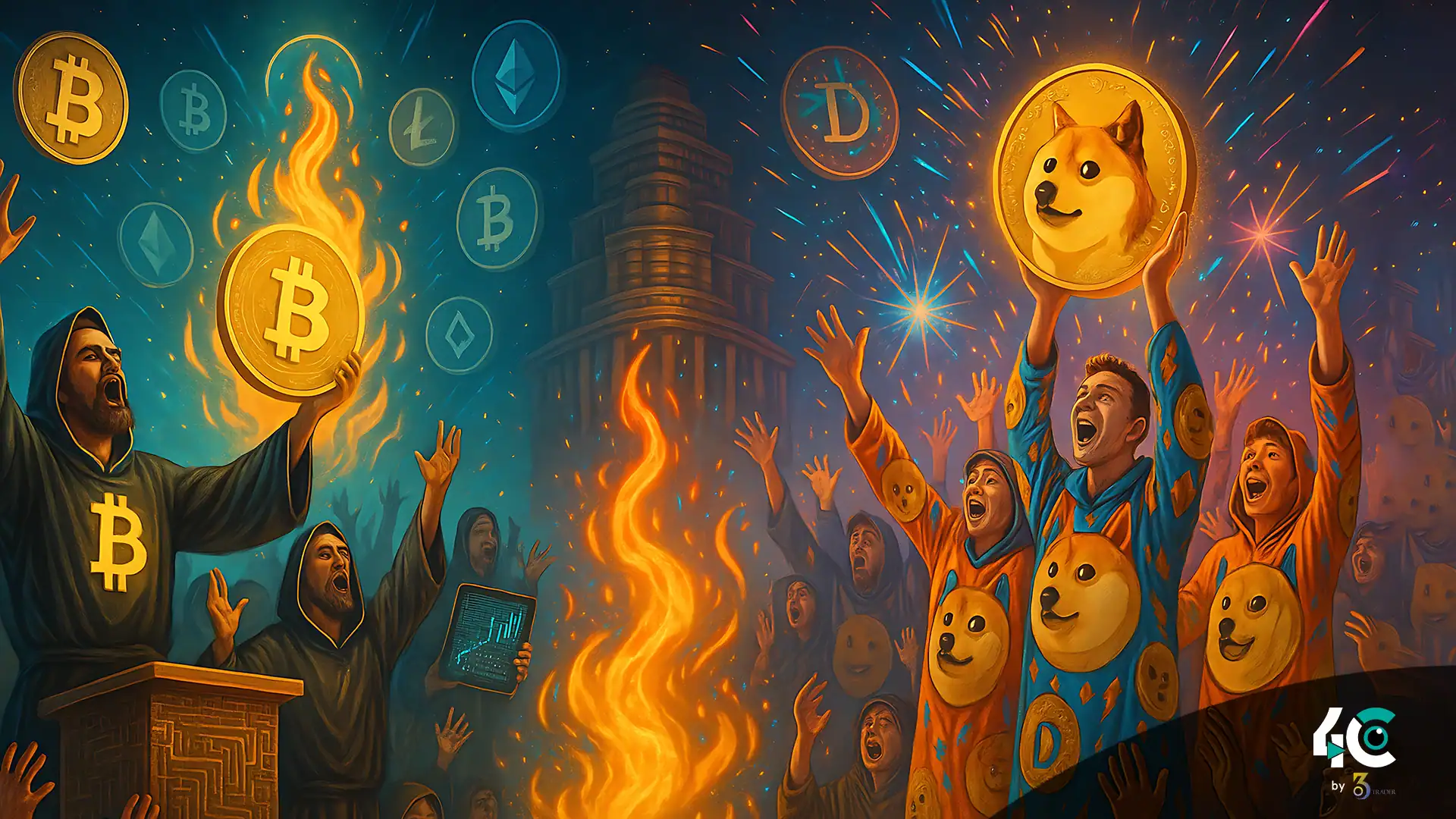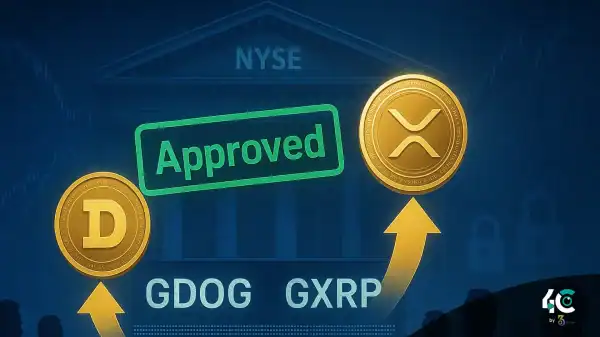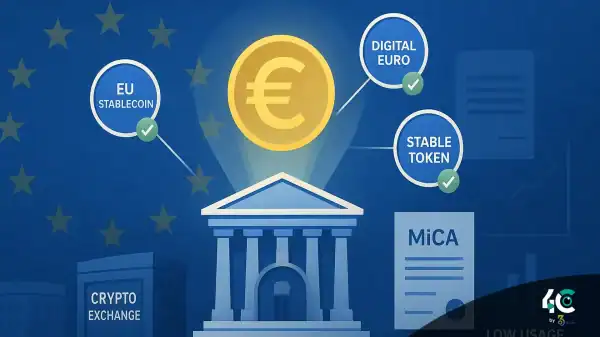The cult of crypto is evolving into a cultural phenomenon, with Bitcoin maximalists and memecoin communities resembling modern-day digital faiths. These groups display intense loyalty, symbolism, and belief in their coin’s mission, mirroring the structures of traditional religious movements.
Crypto as Religion: The Rise of Religious Imagination in Blockchain
Cryptocurrencies are not only assets; they are also signifiers of ideology. They are also identity and community. Similar to religions, crypto followings are based on shared beliefs and prophets. The larger story of decentralization and financial freedom in humanity shapes the way individuals perceive themselves.
Key Characteristics of Crypto: “Religions”
- Key figures like Satoshi Nakamoto (Bitcoin) and Billy Markus and Jackson Palmer (Dogecoin), who are the prophets of Dogecoin, and Vitalik Buterin (Ethereum) are revered as visionary creators.
- White papers, forums, and tweets are foundational documents that take on the character of sacred writings. For instance, maximalists refer to Bitcoin’s whitepaper like scripture.
- People may view HODL practices, halving celebrations, and attending NFT drops as ceremonial acts. Symbols such as Bitcoin’s ₿ or Dogecoin’s Shiba Inu dog act as sacred logos.
- Eschatology: Many crypto communities share a vision of the apocalypse in which traditional finance collapses, making way for utopian societies on their coin.
As such, crypto fandoms serve as a type of modern-day religion; there are passionate believers and a strong belief system.
Bitcoin Maximalism: The True Believers
Bitcoin maximalism lies at the center of the spectrum of crypto-religions. Bitcoin maximalism is the religious conviction that Bitcoin is the only cryptocurrency that is real. Proponents of maximalism call Bitcoin “digital gold” because they believe it will replace fiat currency and act as a store of value in tough times.
- The Godliness of Scarcity: The 21 million supply of Bitcoin demonstrates its divine sanction and its invulnerability to inflation.
- Maximalists oppose banks and government institutions. They view Bitcoin as a vehicle for freedom.
- Coronavirus wasn’t a pyrotechnical simulation, but the virus did convince us that it was but a dress rehearsal.
Behavioral Impact
- Maximalists firmly believe it can affect the market.
- With respect to other cryptocurrencies, people have always been agreeable towards Bitcoin.
- New adopters, due to their evangelism, strengthen Bitcoin dominance.
Nonetheless, their inflexibility could drive away allies and prevent innovation in favor of dogma.
Memecoin Fandoms: The Playful Counter-Cultures.
At the other end of the spectrum are memecoins, with the likes of Dogecoin (DOGE) and Shiba Inu (SHIB). The memecoin community contrasts sharply with Bitcoin maximalists, exhibiting humor and irony that are equally intense.
Why Memecoins Inspire Devotion
- People who don’t have enough money to invest in big cryptocurrencies like Bitcoin can participate in memecoins and invest in them.
- When you come together over shared memes and inside jokes, a feeling of ownership and belonging builds.
- Influencers like Elon Musk help unlock the potential of memecoins. As they take cultural icons and see their value rise, they turn into a viral phenomenon.
Behavioral Impact
- Memecoins’ fandom sparks speculative frenzy with their hype.
- Social media campaigns are reinforcing price hikes that cause memes to reach a billion dollars in value.
- FOMO comes in fast here with the casual trader, which will start a pump-and-dump.
Though traditional investors find memecoins to be a hoax, memecoin believers embrace the criticism as part of their underdog identity.
Psychological Drivers Behind Crypto Zealotry
What makes people so passionate about their favorite coins? There are many psychological reasons that lead to cult-like crypto fandoms.
1. Cognitive Biases:
Confirmation bias refers to the tendency of individuals to seek information that confirms their own pre-existing beliefs while rejecting contradictory information.
In the sunk cost fallacy, individuals often choose not to sell their stock because they have already incurred significant losses and believe that holding will prevent further losses.
2. Tribalism:
People almost always go toward the crowd that helps them become better or smarter humans. Crypto tribes make us feel that we belong or are safe.
3. Escapism:
For many, the broken systems are not good enough. And crypto offers an alternate, like an escape route.
4. Fear and Greed:
Extreme sentiment drives the market both to irrational overexuberance and panic selling.
Market Implications of Crypto Zealotry
Members often act irrationally, causing wild fluctuations in prices.
Positive Effects
- Strong communities attract developers, investors, and users and improve ecosystems.
- Resilient enthusiasm keeps projects alive when they falter.
Negative Effects
- Hype causes speculation bubbles, where things become expensive and valuable, but not real.
- Blindness to faith does not allow the discussion of matters.
- Excessive enthusiasm can bring regulatory scrutiny and hamper growth.
Is Zeal a Strength or Weakness for Crypto?
When there is too much enthusiasm in something, it prolongs the adoption and innovation process. Finding the right proportion of conviction and critical thinking will ensure lasting success.
Strengths of Zealotry
- Zealotry fosters grassroots adoption and advocacy.
- It makes communities strong enough to face adversities.
Weaknesses of Zealotry
- It makes a person make foolish decisions that harm himself and the market at large.
- Newcomers who are not familiar with the crypto lingo or ideologies are affected.
- Concluding Remarks: What’s In Store for Crypto Religions?
Over time, belief systems surrounding cryptocurrency and blockchain will evolve as well. These fandoms are modern religions or a kind of cult. They illustrate how humanity is striving to find meaning, connection, and power. Their enthusiasm may have brought crypto to prominence. But that enthusiasm can pose a risk if it goes unchecked.
To be competitive in the industry, the players need to find a way to balance passion and practicality. If it welcomes diversity of thought, encourages education, and emphasizes practical applications over blind faith, crypto can become something positive without losing its essence.
Conclusion
People who believe in cryptocurrency, whether they prefer Bitcoin or Dogecoin, exhibit cult-like traits due to their unique philosophy, rituals, and even prophets. This enthusiasm drives market behaviors and causes network effects and bubbles. Being convinced helps your adoption and resilience, but being overly fanatical can hurt your credibility and sustainability. In order for crypto to become a mainstream financial instrument, stakeholders must find a balance between passion and pragmatism.


